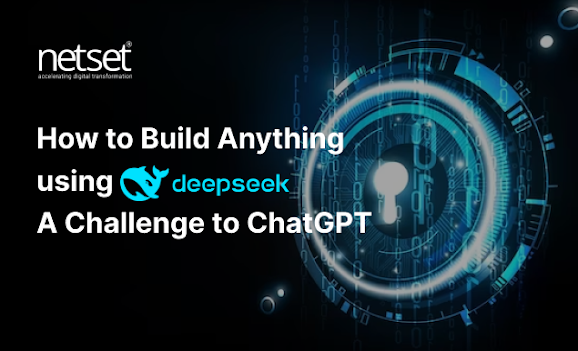In today's digital age, privacy and data security are top priorities for individuals and businesses alike. With increasing concerns over cloud-based AI solutions exposing sensitive data to potential breaches, DeepSeek-R1 emerges as a powerful local AI assistant that ensures privacy and efficiency. Designed to work entirely on local hardware, it enables users to interact with their files securely without the need for cloud services.
Key Features of DeepSeek-R1
Privacy-First Approach
Unlike traditional AI models that rely on cloud storage and processing, DeepSeek-R1 operates locally, ensuring that no data ever leaves the user's system. This provides an added layer of security, making it ideal for handling confidential business documents, legal files, financial data, and personal records.Versatile File Processing DeepSeek-R1 supports a variety of file formats, including PDFs, Word documents, and more. Whether users need to extract critical information, summarize reports, or quickly retrieve key data points, the AI assistant can perform these tasks with remarkable accuracy and speed.
Seamless Installation and Setup Setting up DeepSeek-R1 is straightforward, with minimal technical expertise required. It integrates seamlessly with local systems and provides an intuitive user interface that allows users to begin interacting with their files almost immediately.
Cost-Effective Solution Cloud-based AI services often come with recurring subscription costs, making them expensive in the long run. DeepSeek-R1 eliminates the need for such ongoing expenses, offering a one-time setup that provides a sustainable and budget-friendly alternative without sacrificing functionality.
- Optimized for Local PerformanceDesigned to run efficiently on consumer-grade hardware, DeepSeek-R1 does not require high-end enterprise servers. It leverages the capabilities of local machines, ensuring smooth and responsive operations, even on standard laptops and desktops.
- Enhanced ProductivityWith AI-driven insights, DeepSeek-R1 helps users stay organized and productive. It can assist with tasks such as document categorization, content extraction, and generating summaries, making it an invaluable tool for researchers, legal professionals, and data analysts.
Why Choose DeepSeek-R1?
For those seeking a secure, efficient, and cost-effective way to harness AI capabilities without compromising data privacy, DeepSeek-R1 offers a compelling solution. Its offline functionality ensures complete control over sensitive data, making it suitable for industries that require high levels of confidentiality, such as healthcare, law, and finance.
By leveraging DeepSeek-R1, users can enjoy the benefits of AI-driven automation without the risks associated with cloud dependency, ensuring peace of mind and total control over their data.
Setting up a local AI system with DeepSeek-R1 ensures privacy and control over your data. Follow these steps to install and run DeepSeek-R1 on your machine:
1. Install Ollama
Ollama is a tool that facilitates running AI models locally. Begin by installing it on your system:
For macOS and Linux:
Open your terminal and execute:
bash
CopyEdit
curl -fsSL https://ollama.com/install.sh | sh
After installation, verify the version:
bash
CopyEdit
ollama -v
For Windows:
Download the installer from the Ollama website and follow the on-screen instructions.
2. Download DeepSeek-R1 Model
DeepSeek-R1 offers various model sizes to accommodate different hardware capabilities. Choose the model that best fits your system:
1.5B Model (Smallest):
bash
CopyEdit
ollama run deepseek-r1:1.5b
8B Model:
bash
CopyEdit
ollama run deepseek-r1:8b
14B Model:
bash
CopyEdit
ollama run deepseek-r1:14b
32B Model:
bash
CopyEdit
ollama run deepseek-r1:32b
70B Model (Largest):
bash
CopyEdit
ollama run deepseek-r1:70b
It's advisable to start with a smaller model to assess performance before progressing to larger models, which require more substantial hardware resources.
3. Set Up a User Interface (Optional)
For a more user-friendly experience, you can set up a graphical interface:
Chatbox: A free, privacy-focused desktop interface compatible with various models.
Download Chatbox from chatboxai.app.
In Chatbox settings, select Ollama as the model provider.
Configure the Ollama API host to http://127.0.0.1:11434.
Choose your DeepSeek-R1 model and save the settings.
This setup allows you to interact with DeepSeek-R1 through a graphical interface, enhancing usability.
4. Running DeepSeek-R1
Once the model is downloaded, you can start interacting with it:
bash
CopyEdit
ollama run deepseek-r1:8b
Replace 8b with your chosen model size. Ensure your system meets the hardware requirements for the selected model.
5. Integration into Projects
To integrate DeepSeek-R1 into your applications:
Local Deployment:
python
CopyEdit
import openai
# Connect to your local Ollama instance
client = openai.Client(
base_url="http://localhost:11434/v1",
api_key="ollama" # Authentication-free private access
)
response = client.chat.completions.create(
model="deepseek-r1:8b", # Replace with your model size
messages=[{"role": "user", "content": "Your prompt here"}],
temperature=0.7 # Controls creativity vs. precision
)
This script connects to the locally running DeepSeek-R1 model and processes prompts as specified.
By following these steps, you can set up DeepSeek-R1 locally, ensuring a secure and private AI environment tailored to your needs



